Braces wires come in varying dimensions to apply different forces. Thin wires are soft and lightweight, ideal for early treatment. Medium wires exert moderate pressure as teeth are halfway aligned. Thick wires deliver high force needed for final positioning of stubborn teeth. Wire material also differs depending on required properties.
Discover Braces Wire Sizes & Types! Uncovering the secrets of Nickel-titanium is very flexible but can exert strong pressure over time. Stainless steel is durable yet delivers constant pushing power. Esthetic materials like beta-titanium or polyurethane disguise wires’ visibility. Each suits various phases of the treatment plan.
Some wires feature distinctive technologies. Shape-memory wires self-activate as jaws close to home teeth into place. Twisted wires coil around themselves to fill gaps caused by missing teeth. Rectangular wires grip tooth surfaces from multiple angles for thorough control. Choosing the right wire type steer teeth into their destined locations.
Key Takeaways
- Wire thickness and material varies – thin early in treatment, thicker later for stronger forces to move teeth.
- Nickel-titanium and stainless steel are common materials, providing flexibility and constant pushing power.
- Esthetic wire options like beta-titanium disguise braces from view better than metallic wires.
- Shape-memory wires self-activate when jaws close to push teeth into alignment. Don’t miss to read out this topic The Detailing Stage Of Braces.
- Twisted and rectangular wires offer distinct advantages, gripping teeth tighter from multiple angles for thorough control of movement.
Overview Of Braces Wire Sizes & Types
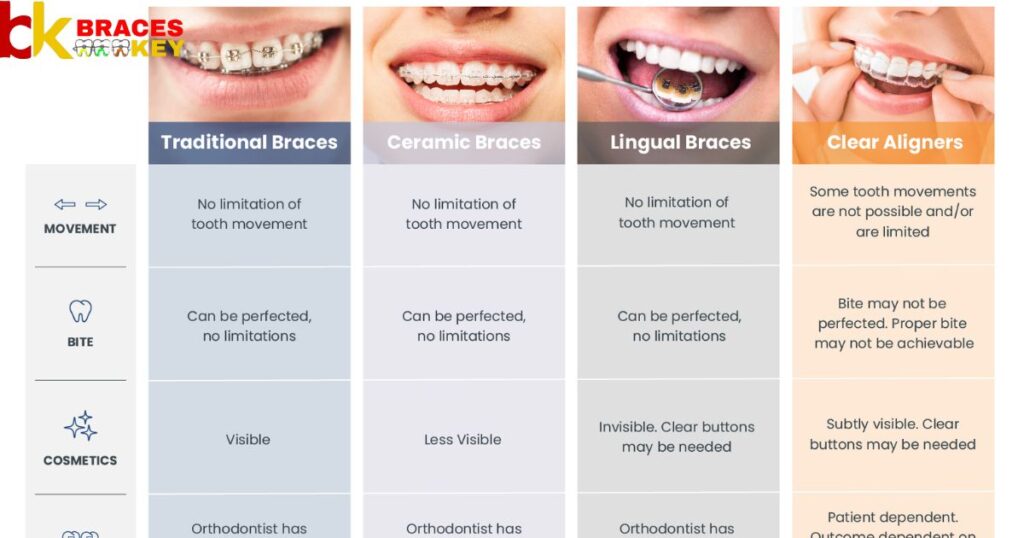
A variety of wires are used during orthodontic treatment, from early flexible thin wires to reinforced thick varieties for final positioning. Material selections also vary, with nickel-titanium providing shape memory and stainless steel exerting constant force.
Novel wire designs like twisted or rectangular configurations offer added control. Choosing the right combination of size, strength and material is key to effectively directing tooth movement at each phase of alignment through customized application of different pressure levels.
Step By Step Guide To Braces Wire Sizes & Types
- Braces wire comes in different thicknesses measured in thousandths of an inch (thou). 17×25 is a common size, with the 17 being the thickness in thousands. Larger wires apply more force.
- Stainless steel and titanium are popular wire materials. Stainless is strong but can irritate gums. Titanium is durable, rust-resistant and more comfortable. Others include beta-titanium and nickel-titanium nitinol memory wire.
- Lower versus upper archwires have distinct sizes. Upper front teeth may use 0.014 wire progressing to 0.018 or 0.021 rounds. Below, 0.016 or 0.0175 works well initially prior to changing to thicker rectangles like 0.0175″×0.025″ later in treatment.
Braces Wire Sizes & Types In A Nutshell
Braces use thin wires to slowly move teeth into alignment. Wire thickness varies to apply different force levels. Narrow wires exert gentle pressure while wider wires push firmly.
Color coding helps orthodontists identify wire strength. Common wires include beta titanium which is nickel-free and nickel titanium for its flexibility. Proper wire selection is key to achieving the perfect orthodontic outcome.
The Light Flexible Wires
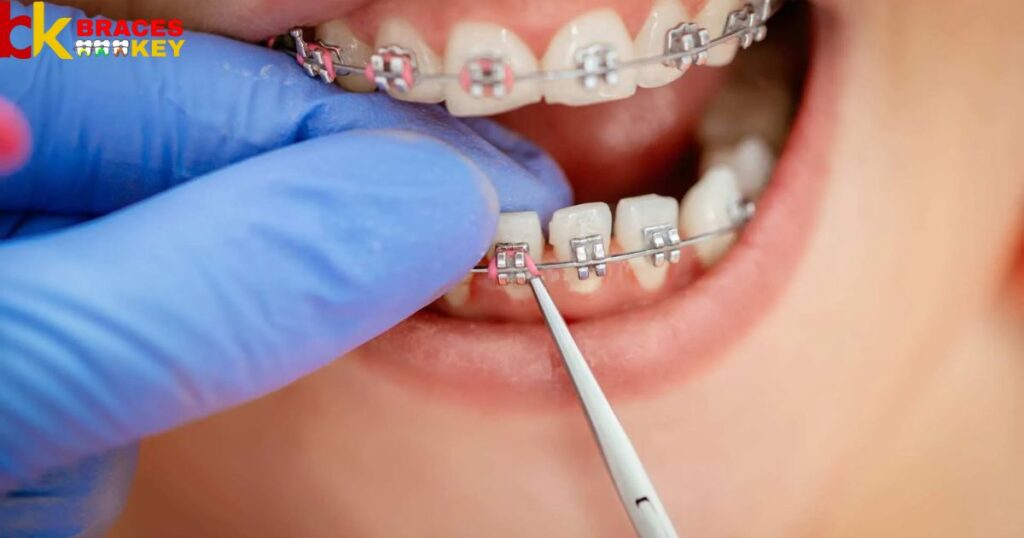
The early stages of treatment involve using very light and flexible wires. These delicate wires are commonly made of stainless steel or beta titanium. They are a slim 0.014 inch in diameter to barely maneuver the teeth.
As they are so fine, they apply mere ounces of force. This allows for careful movement at the start. Over months, the wires transition to thicker and stiffer varieties to push harder as teeth shift into place.
The Medium Flexible Wires
As treatment progresses, the orthodontist will install medium flexible wires. Slightly thicker at 0.016 to 0.018 inches, they impart a low to moderate pushing pressure. These intermediate wires are often nickel titanium for its superelastic property.
The nickel titanium allows for some flexing to avoid damage but also applies steady force as teeth adjust. Patients may find these wires require more dental adjustment than the initial light wires. They continue nudging teeth forward in the overall orthodontic movement.
The Large Rigid Wires
In the later stages of orthodontic therapy, more rigid wires are employed. Measuring 0.019 by 0.025 inches, these wide wires bear heavy loads. Made from stiff stainless steel alloys, they possess little flexibility.
The large rigid wires deliver maximum torque and rotation forces to sculpt the final arch form. Patients may experience some discomfort from the increased pressure. However, the strong wires are able to slide teeth firmly into their target positions. Once placed, they hold teeth in their corrected locations.
Something In Between
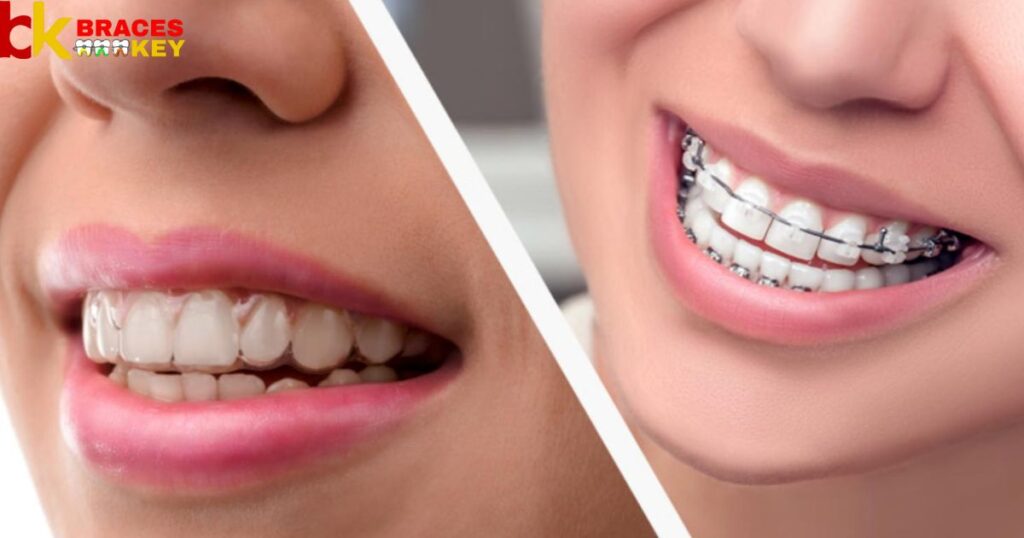
Sometimes treatment requires wires of varying hardness between the standard classifications. A wire may start out flexible like a medium type but become stiffer like a large over several adjustments. Or a light wire is selected that offers slightly more rigidity than usual at the early phase.
These intermediate wires that fall in between the recognized categories allow customizing force levels to specific patient needs. The orthodontist chooses the right wire to perfect tooth alignment through incremental changes in pressure.
Wires For All Types Of Mouths
Orthodontists have an array of wire options to accommodate different patient mouth types. Stiffer wires support heavy teeth with minimal roots. More flexible varieties are suited for shallow bites with crowding.
Some wires incorporate springs that expand arches gradually. Others have sections of varied thickness to control movement precisely tooth by tooth. Whether teeth require gentle coaxing or forceful shifting, specialized wires deliver personalized treatment. A wire’s specifications are tailored for each individual malocclusion.
How Do Braces Wires Work?
Braces wires function through the simple yet effective mechanism of placing pressure on teeth. As the archwire sits secured in place by brackets, its stiffness and composition induce subtle forces. Lighter wires cause negligible displacement while thicker varieties bear down considerably.
Over months, these repetitive pressures from all sides urge teeth to adjust minutely. It’s a slow process of nudging each tooth into ideal alignment through stress from the anchored orthodontic wire. Proper wire sequencing is what facilitates orderly tooth movement.
Taking A Closer Look At Braces
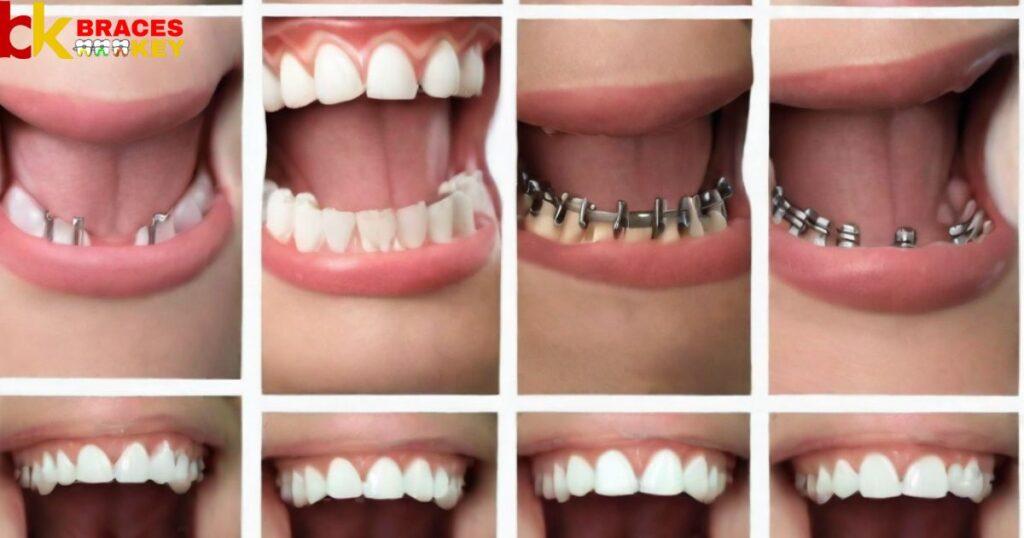
Braces may appear as simple metal brackets and wires, but a closer inspection reveals the technical wizardry. Lined archwires come in varying thicknesses to control pressure stages. Self-ligating brackets smooth gliding with futuristic doors.
Tie wings streamline capacity while streamers secure with translucent ties. Embedded colors identify correcting torque and invisible aligners fit imperceptibly. Beneath the outward simplicity lies groundbreaking engineering that repositions teeth meticulously and accurately. Orthodontics today relies on constant innovations to enhance treatment.
The Arch Wire
The curved arch wire running through each bracket forms the technical backbone of braces. Made of varied alloys, its stiffness and shape manipulate tooth positioning with subtle pressures. Initially very soft wire encourages marginal shifts while stiffer formats apply firmer forces later in treatment.
Colour-coded wires facilitate appropriate selection at each phase of correction. Arch wires stealthily conduct the behind-the-scenes work of reshaping one’s natural arrangement through sequential stressing with unmatched control and effect.
Learning All About The Arch Wire
Understanding the arch wire’s role is key to knowing how braces work. Sliding within brackets, its curved form mimics the desired dental curve. Employing distinct alloys at varied thicknesses allows delivering precise pressures that budge teeth minutely over lengthy use. Though subtle in nature, the arch wire’s constant bending stresses teeth into their target positions.
Adjusting its rigidity during treatment steers tooth movements skillfully. One must appreciate this invisible operator that facilitates correction through its intelligent application of low mechanical tensions.
Parts Of Braces
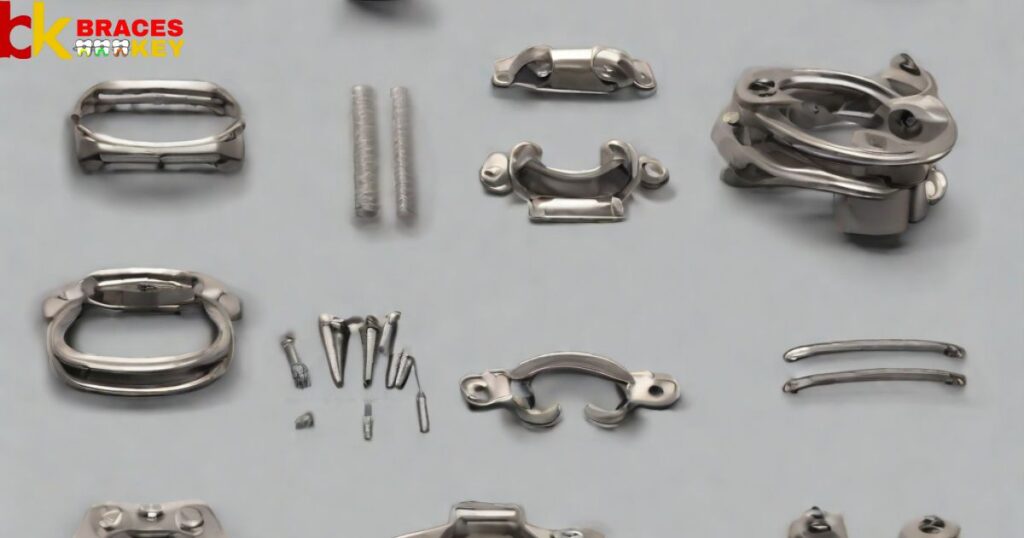
Braces consist of interconnecting segments that function as an integrated system. The small brackets affix to enamel surfaces, anchored firmly in place. Archwires slot into the bracelets, curved like a grin to guide teeth.
Rubber separators bust between to shift positions gradually. Elastic ligatures loop wire into brackets, holding everything together tightly. Each contributor plays its crucial part, whether attaching or propelling. Proper collaboration between these brace constituents is what straightens smiles effectively.
From Brackets To Bands
Braces utilize an assortment of attachments to secure to various tooth types. Small metal brackets affix directly to exterior enamel surfaces of regular teeth. Lingual braces position discreetly behind teeth. For multi-rooted premolars and molars, thick rubbery bands encircle to adhere firmly.
Spacer items like power arms slip between specific teeth mid-treatment. Each component selectively anchors where needed, be it brackets, clear aligners or metal bands. Optimizing placement for every tooth ensures accurate alignment forces are delivered precisely as intended.
All About Arch Wires
Arch wires form the functional core of orthodontic appliances, gliding inside brackets to apply correcting pressure. Made from specialized alloys selected for flexibility or rigidity, wires initiate or intensify tooth movements. Prescribed alloys and dimensions match the forces needed at each stage.
Threading through brackets, the arch wire delicately nudges teeth with persistent biomechanical stress. Subtly reshaping the dental arch over months, wires facilitate straightening through continuous bending moments exerted from within. Understanding their role is key to appreciating braces’ behind-the-scenes mechanisms.
Orthodontic Wire Sizes
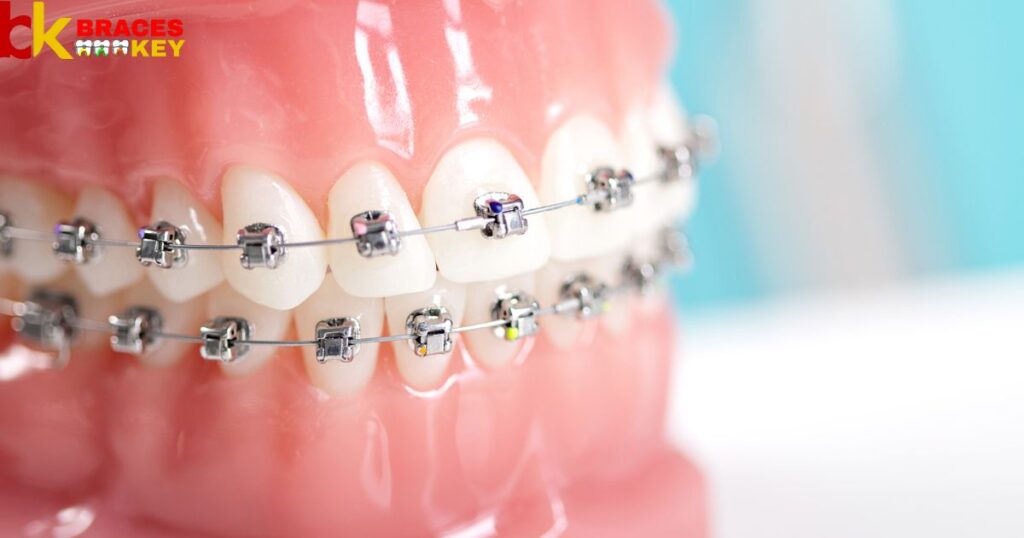
Braces utilize an assortment of wire gauges matched to treatment requirements. Delicate phases employ thinner diameters for weaker forces while later stages select wider variants. American Wire Gauge sizes vary from 0.014 to 0.019 inch, while metric measures extend this range further.
Choosing the suitable cross-section ensures controlled pressure tailored for each tooth’s scheduled movements. Subtle diameter increases administer precisely calibrated levels of corrective stress. It is the orthodontist’s prerogative to sequence wire sizes strategically for optimum alignment results.
Orthodontic And Dental Consulting Services
Trusted orthodontic experts offer valuable specialized advice to complement care. Consultations analyze complexity to recommend options like camouflage treatment or orthognathic surgery. Dental professionals partner through second opinions that deepen understanding treatment limits.
For patients seeking non-traditional solutions, alternative referrals source creative solutions. Whether negotiating insurance approvals or navigating interdisciplinary cases, expertise guides tough decisions. Comprehensive consulting truly elevates an individual’s orthodontic and dental treatment outcomes.
Different Braces Wires Stages
Each wire change marks teeth transitioning through stages of alignment. Gentler circulars inaugurate movements of inclination and torque. Medium square varieties leverage rotational pressures and dimensional corrections.
Later latticework looms large, tackling tight territories with widesized vigor. Rigid rectangles resolve final configurations through stiffness. Skillfully sequenced, the strategic wires skillfully shape arches toward perfection.
Braces Wire Thickness

The thickness of each wire delicately dictates the diligence of dental shifts. Thinner strands slacken speeds to safely start rotations, while stouter wires widen forces to finish complex contortions.
Precise gauges supply graduated guidance to teeth, moving molars and premolars millimeter by millimeter throughout months of modification. orthodontists astutely alternate diameter and rigidity to transport smiles from start to shining finish.
Archwire Braces Wire Size Chart
An archwire chart maps the magnificent migration. Beginning with delicate 0.014 inches to draw first movements, gauges inflate over intervals. 0.016 inches and 0.018 inches mediumly musculate the extensive endeavor.
The stalwart 0.019 inches relentlessly responsibilities remaining relocations with robust strength. Skillfully selected in sequence, each systematically reinforced size escorts teeth towards triumphant transformations. The archwire atlas aptly guides grins from origins to ultimate excellence.
Delicate Diameters Drive Initial Transitions
Slender wires start the smile shift subtly, sparing patients soreness. Their fine filaments find footing to carefully turn teeth toward arch alignments. Minute motions mark these mildest mechanics, maneuvering molars and cuspids by calibration.
Guiding grins from their genesis gently, the gentlest gauges ground formative changes. Under their delicate direction, the dazzling work of reconfiguration responsibly begins. Their finespun filaments, thinner than silk, coil lightly as ties but leverage reliable momentum.
Medium Gauges Mend Malocclusions Midway
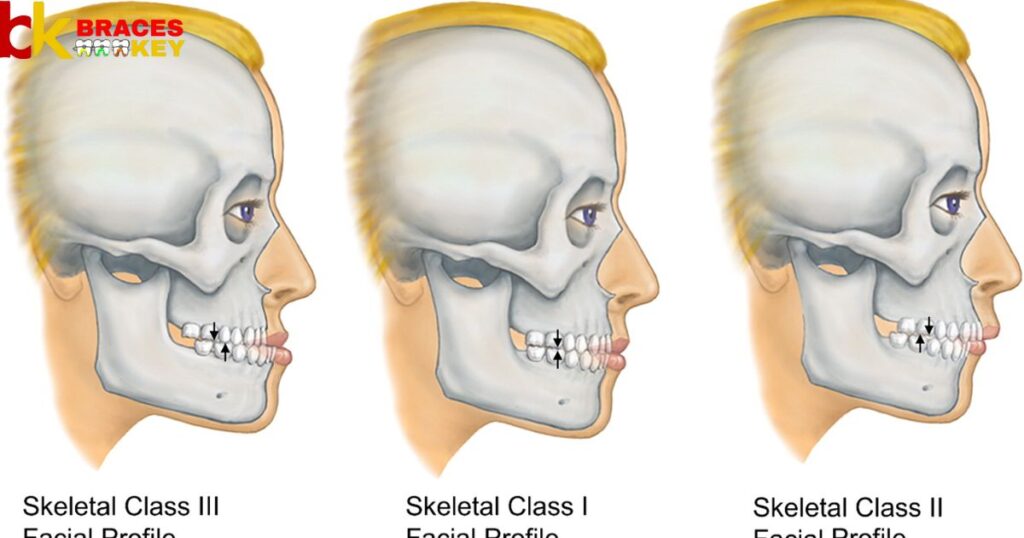
As misalignments manifest, moderate metrics mobilize molars. Their more muscular makeups torque tenaciously yet tactfully. Day by day, dimensional disparities diminish while orientations optimize.
No longer negligible, nascent forces foster functional and esthetic fixations. Progress propels through these medium magnitudes, mending malformations midpoint. Methodical conversions now commence to ultimately culminate corrections.
Stouter Strands Settle Teeth In Final Phases
For stalwart stands capstone corrections and clinch perfection. Their strapping thickness underscores remnant rotations and translations with authoritative assurance. Ambitious arcs are actuated to accept actual positions by these stoutest strains.
No millimeter misaligned least molars or premolars persist beneath such staunch pressure. Sole stubborning slivers signify completion approaches. Stouter strands settle all teeth to finish former formulations.
Specialized Alloys Shape Shift Tooth Movements
Distinctive metals mold molar migrations. Some alloys actuate adjustments apace while others proceed prudent. Flexible files foster forming, sturdy sheets and shore structures. Meticulous materials match misalignments, their makeup shaping shift speeds.
How dental drifts are determined lies in specialized mixtures, chemistry charting the course of each contour. Skillful selections slant each smile’s shift precisely as projected. Through specialized compositions, orthodontia causally crafts coveted configurations.
Moderate Metrics Multiply Motions Monthly
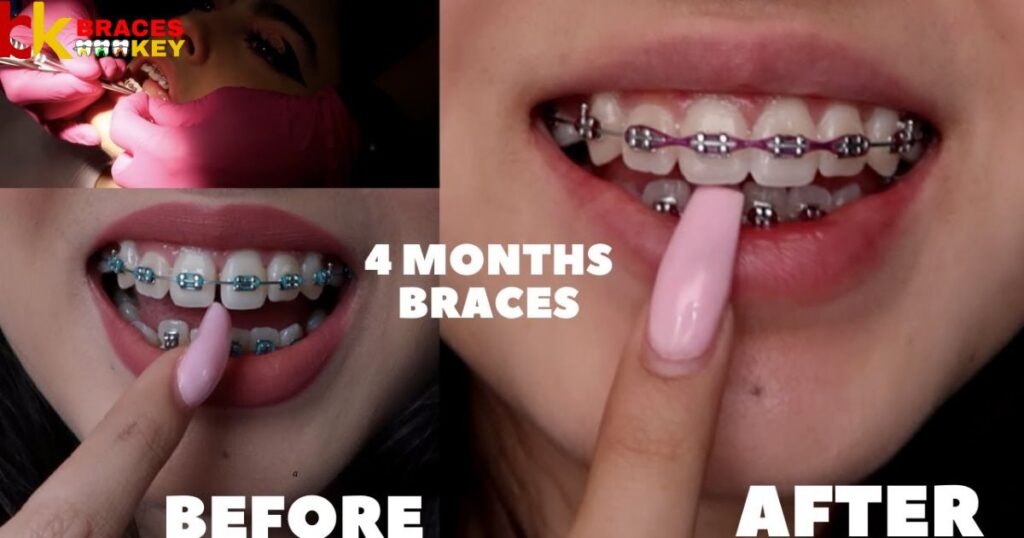
As weeks become months, medium metrics mobilize molars mightily. Their balanced rigidity ratchets rotations at a reliable pace, nudging teeth toward terrains each visit. Rotations deepen as dimples smooth out through monthly migrations.
Stable forces foster formation, coaxing crunching cuspids and grinding premolars into productive play. Progress propels predictably through prudent use of these mid-sized mandates. Moderate motors manifestly move masticators toward a more harmonious hierarchy.
Robuster Rounds Relocate Radically
Now stalwart strands stride into square positions precisely. Their potently proportioned presence precipitates a pivotal passage. Where gentler gauges grated gradually, grosser cords clutch clinically and catapult configurations.
Radical rotational reroutings materialize starkly as robust rods take redirecting rein. Recalcitrant stragglers find final formations through forceful fervor. Stalwart rounds relocate any residual remnants radically.
FAQ’s
What Are The Different Wire Sizes For Braces?
Braces use myriad wire gauges, from delicate 0.014 diameters for gentle shifts to 0.019 widths applying stiffer pressure as crowns align.
What Does A Thicker Braces Wire Do?
As wire gauges increase during treatment, thicker diameters upgrade the corrective forces on teeth from subtle to more considerable pressures to expedite alignment.
What Wire Is The Strongest For Braces?
The thickest 0.019 inch wire delivers the firmest control towards the end of braces therapy, exercising stalwart tension to seat teeth into their destinations.
What Is The Thinnest Wire For Braces?
For careful changeovers, the most delicate 0.014 inch diameter wire is pliable yet potent as it catalyzes initial tooth rotations and minor translations.
Conclusion
Orthodontists have a variety of wire gauges and alloy options to meticulously shepherd teeth into alignment. From 0.014 inch wires generating gentle forces to sturdier 0.019 inch varieties driving the final corrections, periodic grade increases in wire diameter and stiffness supply precisely calibrated tension.
Selecting the suitable braces wire size and type for each stage helps reduce treatment duration while minimizing patient discomfort. Understanding these versatile implements is integral to appreciating braces’ invisible straightening mechanisms.








